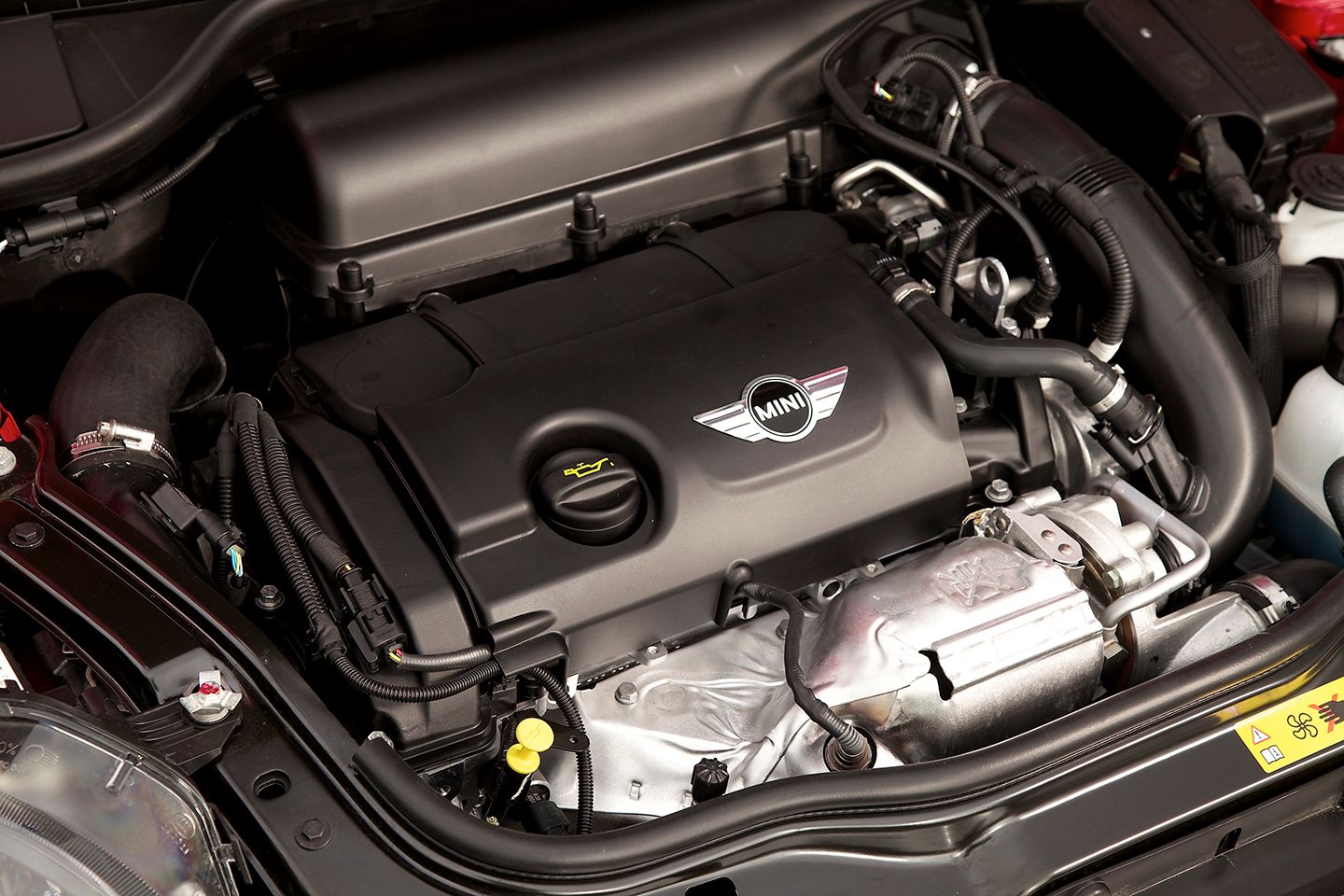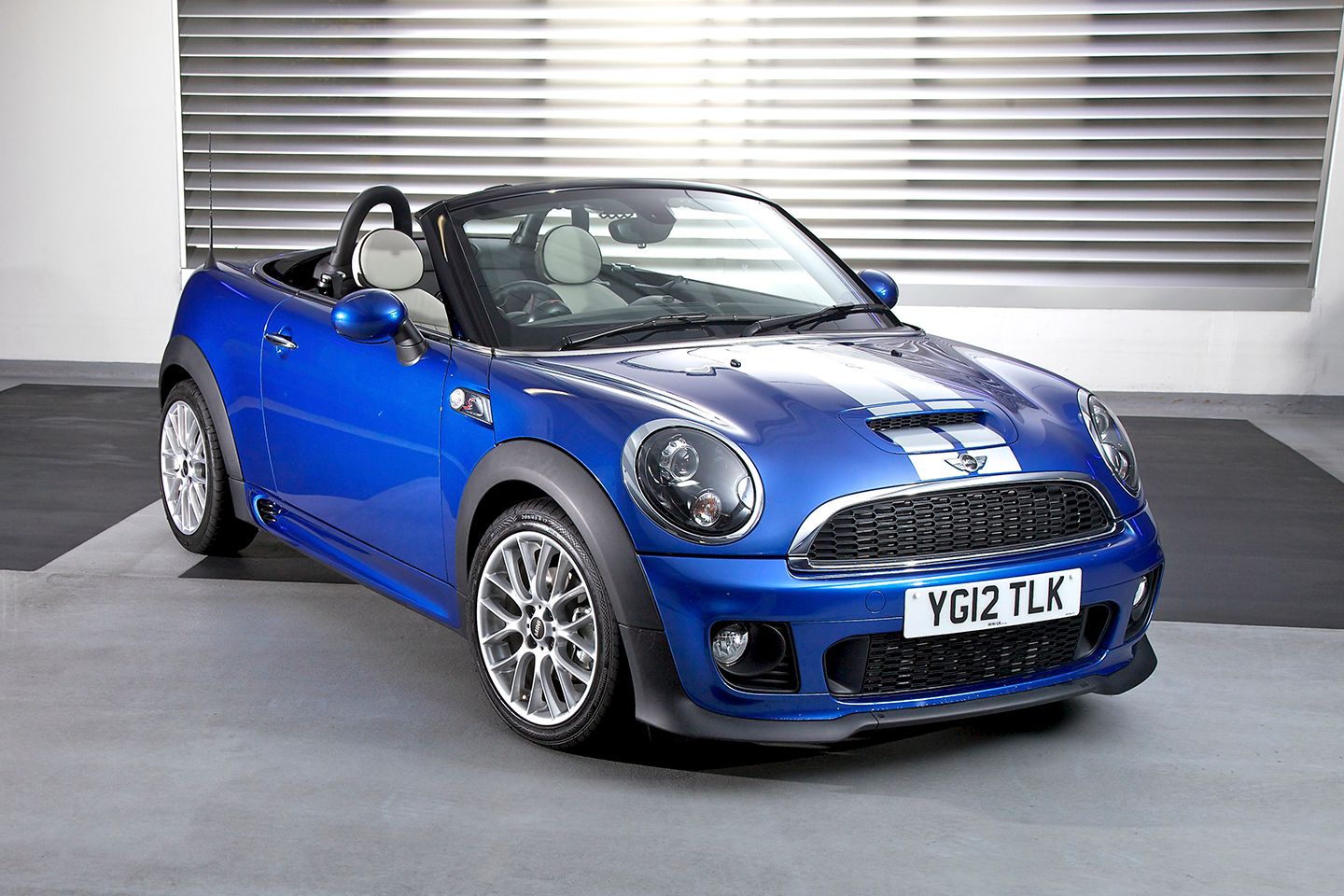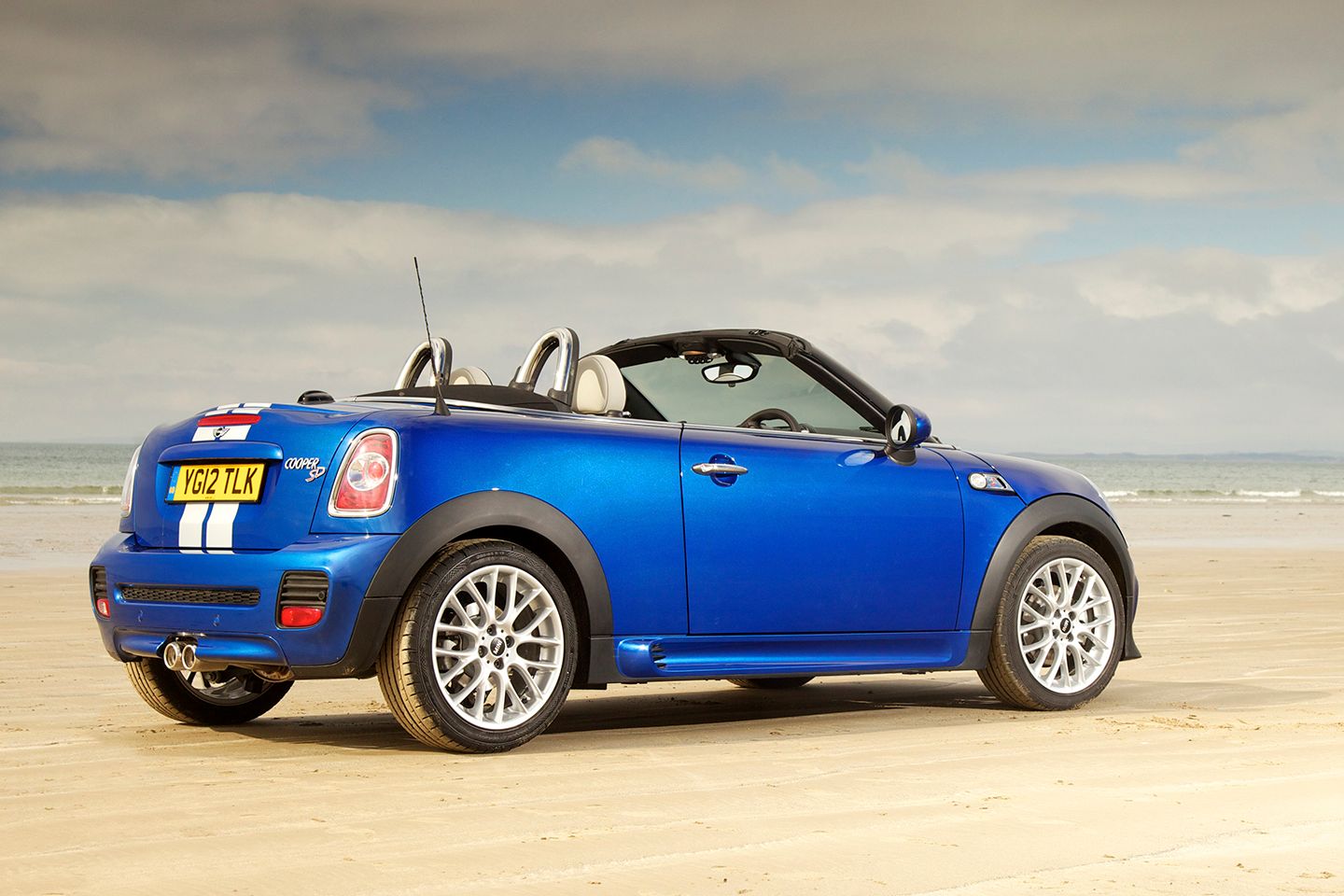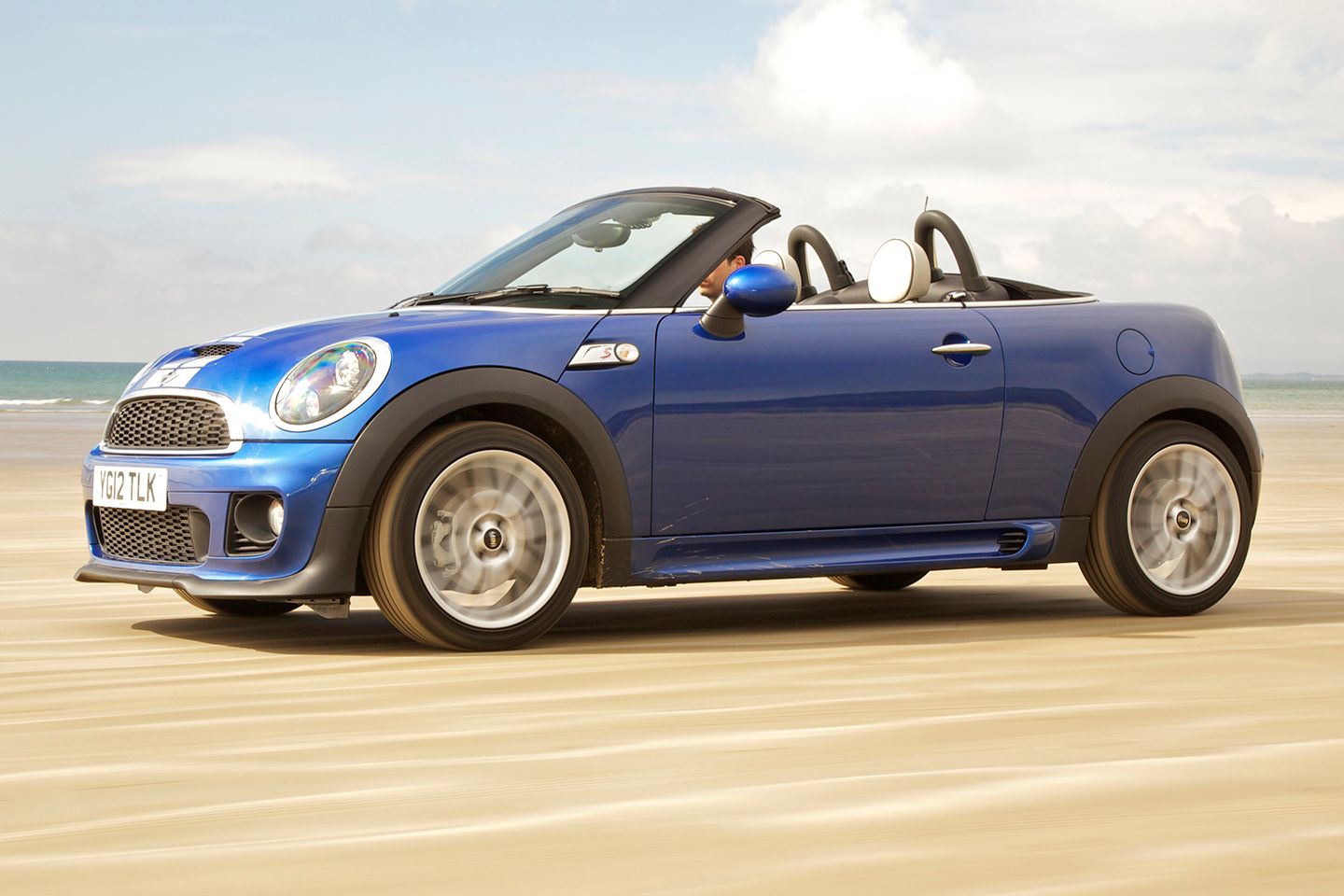Mini Coupe & Roadster | PH Used Buying Guide
Is life a beach with a two-seat Mini? Or do choppy waters lie ahead?
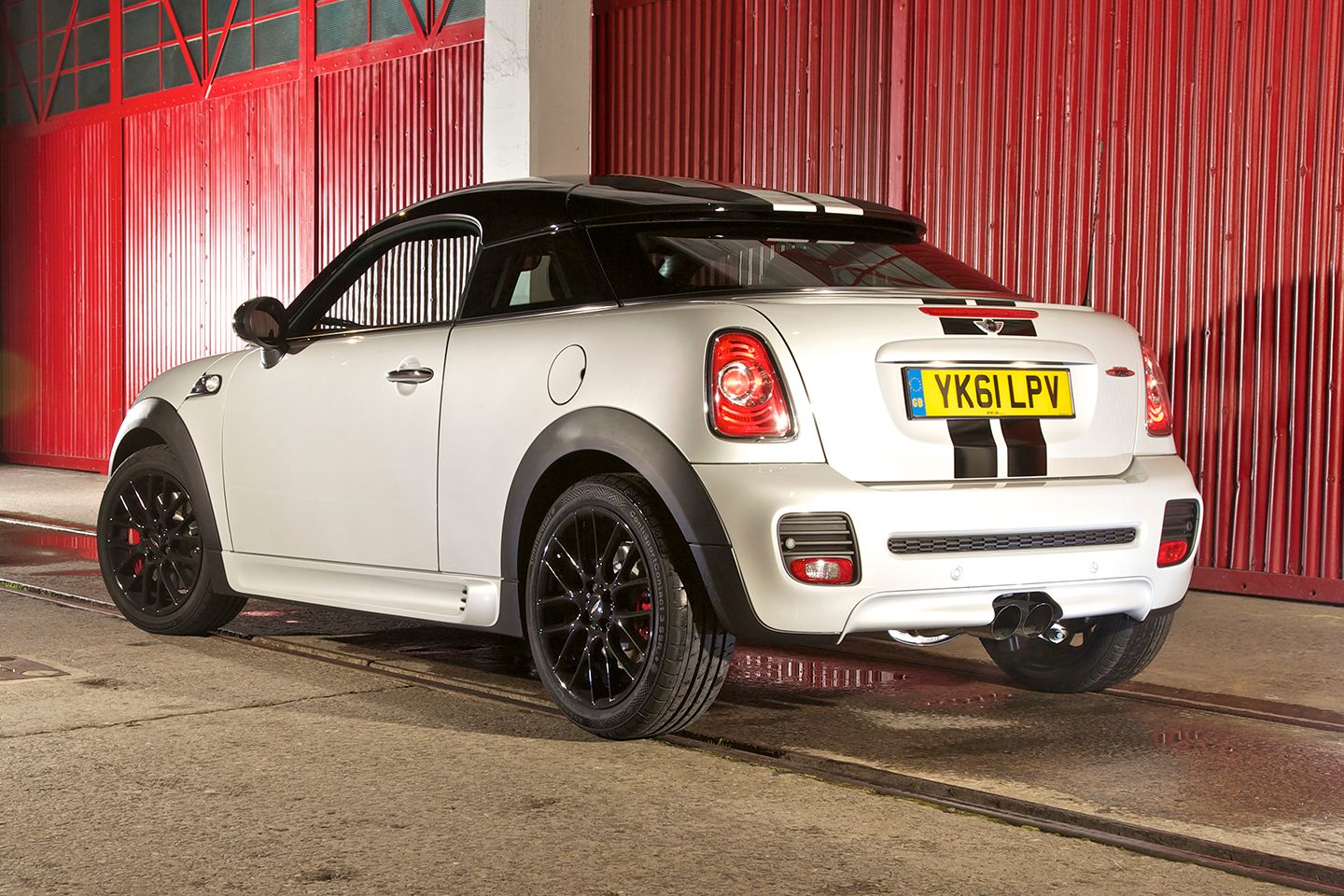
Key considerations
- Available for £1,500
- 1.6-litre petrol inline four naturally aspirated (Cooper) or turbo (S & JCW), 2.0-litre diesel (Cooper SD), front wheel drive
- JCW Coupe was the fastest-accelerating Mini ever
- Engine worries about the old Mini don’t apply here
- No rear seats and very good practicality as a result
- Very useable and very cheap to buy and run
Built in Oxford, the R58 Coupe version of the gen-two Mini was put on sale in October 2011, followed in the spring of 2012 by an open-top R59 Roadster version. Forgetting the old first-generation Elf and Hornet, the Coupe was the first notchback model to come off any Mini production line. It was also the first actual two-seat Mini, as opposed to a Mini that had four seats but was effectively only a two-seater. We’ll talk more on that in the Interior section a little later.
The guy who styled the Coupe said he was inspired by the limited-run Mini offshoots created in the early 1960s by outfits like Marcos and Broadspeed. Many of these cars had chopped rooflines. You could easily see that inspiration in the Coupe’s 23mm lower body height but even the maddest aftermarket conversion specialists from the Sixties would have cocked a quizzical eyebrow at its ‘reversed baseball cap’ roof design. The Roadster was more conventional in its styling and therefore slightly less divisive than the Coupe, which had most motoring journalists trying to crank up their comedy knobs to eleven.
With these cars Mini was hoping to rake in all-new customers along with existing Mini customers who were looking for something different. The more specific demographic was male two-seat sports car drivers who might also be thinking about a Scirocco, Megane, Peugeot RCZ, Audi TT or (optimistically) a Porsche Cayman. To ramp up buyer excitement, all Coupes and Roadsters wore Cooper badges even though the lowest-powered naturally-aspirated 1.6s only had 120hp to play with.
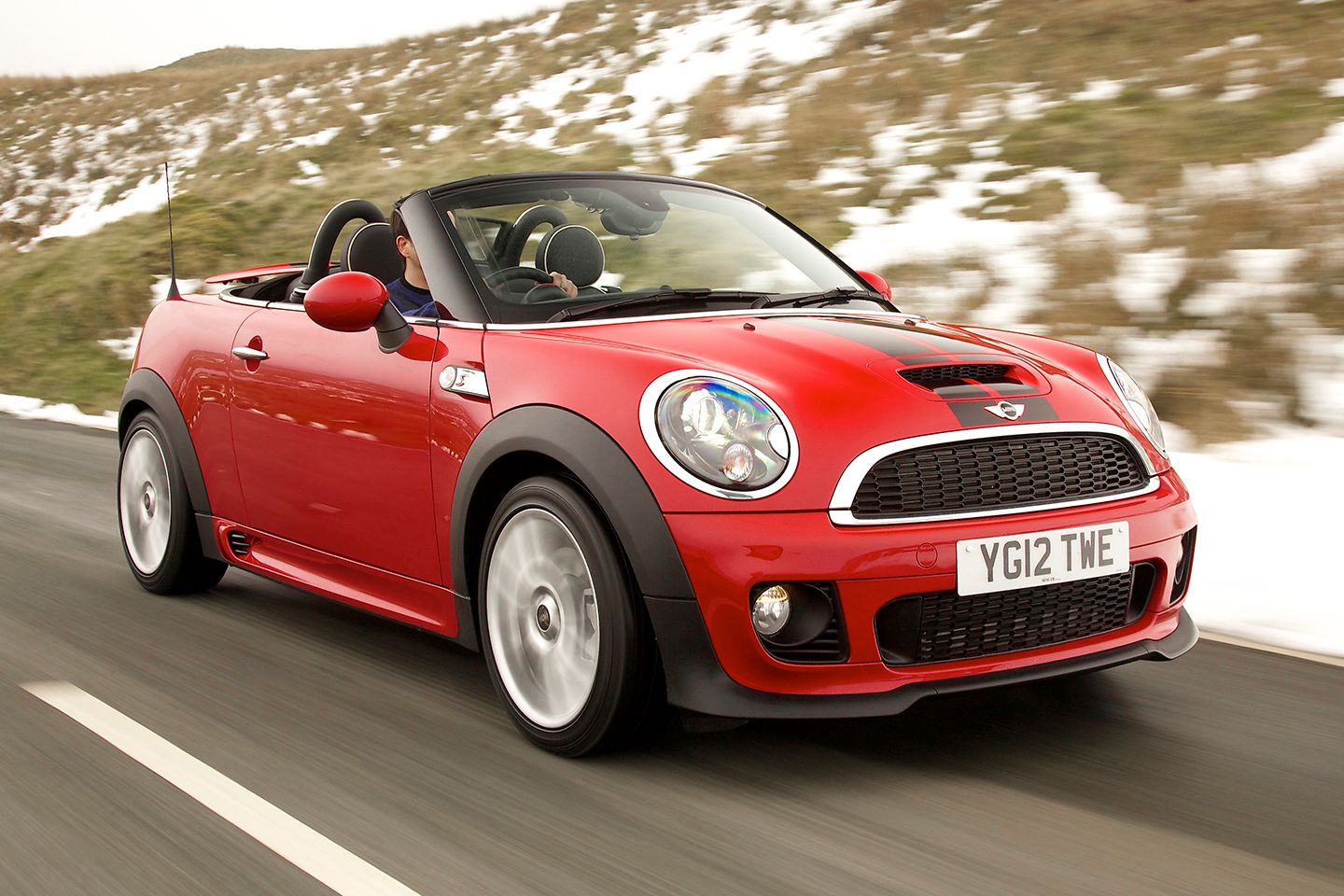
Turbocharging hoisted the 1.6 motor up to 184hp in the S or 211hp in the John Cooper Works. The Coupe could also be had with a poky 143hp/225lb ft 2.0-litre diesel, creating the SD. That was a very good and surprisingly nippy car, but it was outnumbered six to one by the petrol-fuelled variants so we’re going to focus on the petrols in this guide. For passing interest SD prices run from around £2,700 for a 100,000-mile example to £8,000 for a 40,000-miler.
Both the Coupe and the Roadster lasted until the gen-three Mini hatch was released in 2014, with late-build examples overlapping into 2015. Petrol prices now start at just £1,500 for high-mile (120k plus) 120hp Coupes and around £3,000 for 100k+mile 184hp S models. 210hp JCWs start at £4,500 and go up to £11,500. Roadsters are rarer than Coupes – for every one of them on sale there’ll be getting on for two Coupes – and they’re more expensive. Even so you’ll have no problem finding an undamaged, mid-mileage (60k-70k) Roadster for under £3,000. S Roadsters start at around £4k while the relatively rare JCW soft tops kick off at nearer to £6k.
Whether you end up with a Coupe or a Roadster, you’ll be running one of the most driver-oriented cars in its class, but are there skeletons in the closet that make them not worth having even at these prices? Does the gen-two Mini’s spectre of poor reliability still haunt these later efforts? Let’s have a look.
SPECIFICATION | MINI COUPE (2011-2015)
Engine: 1,598cc inline four 16v, n/asp Cooper, turbocharged S and JCW
Transmission: 6-speed manual (or 6-speed Steptronic auto), front-wheel drive
Power (hp): 120@6,000rpm/184@5,500rpm/211@6,000rpm
Torque (lb ft): 118@4,250rpm/192@1,700-4,500rpm/207@2,000-5,100rpm
0-62mph (secs): 8.7/6.9/6.4
Top speed (mph): 127/143/149
Weight (kg): 1,090
MPG (official combined): 52.3/48.7/39.8
CO2 (g/km): 127/136/165
Wheels (in): 15/16/17
On sale: 2011-2015
Price new: £16,640/£19,775/£23,795 (Roadsters £18,020/£20,905/£24,860)
Price now: from £1,500/£3,000/£4,500 (Roadsters £3,000/£4,000/£6,000)
(Data shown is for Cooper 120hp, Cooper S 184hp and JCW 211hp respectively)
Note for reference: car weight and power data are hard to pin down with absolute certainty. For consistency, we use the same source for all our guides. We hope the data we use is right more often than it’s wrong. Our advice is to treat it as relative rather than definitive.
ENGINE & GEARBOX
All three petrol engines had Valvetronic valve control and chain-driven cams. The S and JCW engines were direct injection with twin-scroll turbochargers. In terms of acceleration and top speed the 211hp JCW Coupe was at the very top of the list of volume-produced Minis.
All Coupes bar the JCW could be ordered with a 6-speed Steptronic automatic gearbox which was okay to use but heavier on fuel than the manual. For the JCW it was the manual or nothing. At 44kg that manual box (which came with a ‘for life’ self-adjusting clutch) was one of the lightest of its kind.
Anyone reading this with experience of earlier Minis is probably waiting in breathless anticipation for a long list of mechanical ailments. The good news on that front is that the list isn’t that long on these engines because they are later (N18) versions of the troublesome N14s. They’re chalk and cheese on reliability, but no car is perfect and that goes for the N18. If it idles roughly that’s probably going to be a failed VANOS actuator or camshaft sensor. A diagnostic check will pinpoint which one it is and replacements are not expensive.
The cam chain should last for the life of the engine on a 120hp Cooper but they do wear on the turbocharged S and JCW, especially if the oil has been left at a low level for some time or if it has lost some of its lubricating qualities through excessive heat. Replacing the chain will cost £850 at an independent specialist. You should always use the correct spec synthetic oil. It might drink a bit, but just look at it as a kind of ongoing oil change. Look after it and it will look after you.
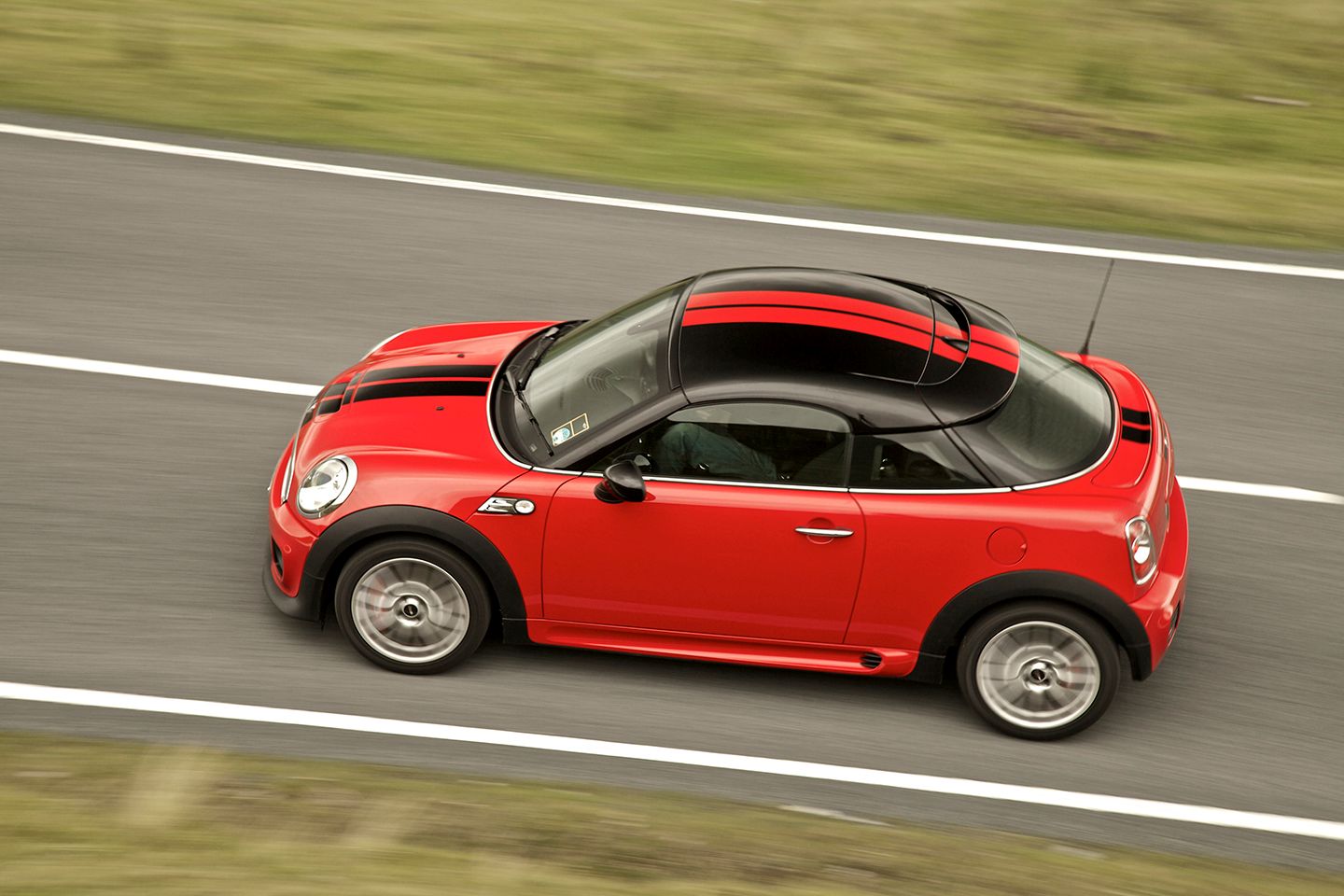
A stage 2 remap from a firm such as Lohen will take your turbo Coupe or Roadster up to 270hp/290lb ft and turn it into a barrel-load of fun with masses of torque steer and wheelspin in fourth gear on a wet road. If you go for that you might want to fit a bigger intercooler to keep underbonnet temps under control.
We could only find evidence of one recall on the Coupe, a range-wide issue concerning the auxiliary water pump on cars (not just Coupes but all Minis and also quite a few BMWs) built in February and March 2011. Its circuit board could go haywire, potentially leading to a conflagration. The pumps were replaced on affected cars. The odd high pressure fuel pump has been diagnosed as faulty, sometimes without exhibiting any real-time symptoms. Replacing them isn’t difficult.
Mini’s TLC servicing pack gave you free condition-based maintenance for five years or 50,000 miles. That could be extended through the TLC XL pack to 8 years or 80,000 miles. The TLC pack was transferable to the next owner for up to 10 years after registration too so some later-registered cars will still be on that programme. Whatever, there’s a good chance that any used Coupe or Roadster will have a decent service history for the early part of its life at least.
At an indie an engine oil service on the basic Cooper will cost £130, or £160 with a new air filter. Add a microfilter to that and it’s £180, or £230 with a new set of spark plugs. Costs for the S and JCW are a tiny bit higher.
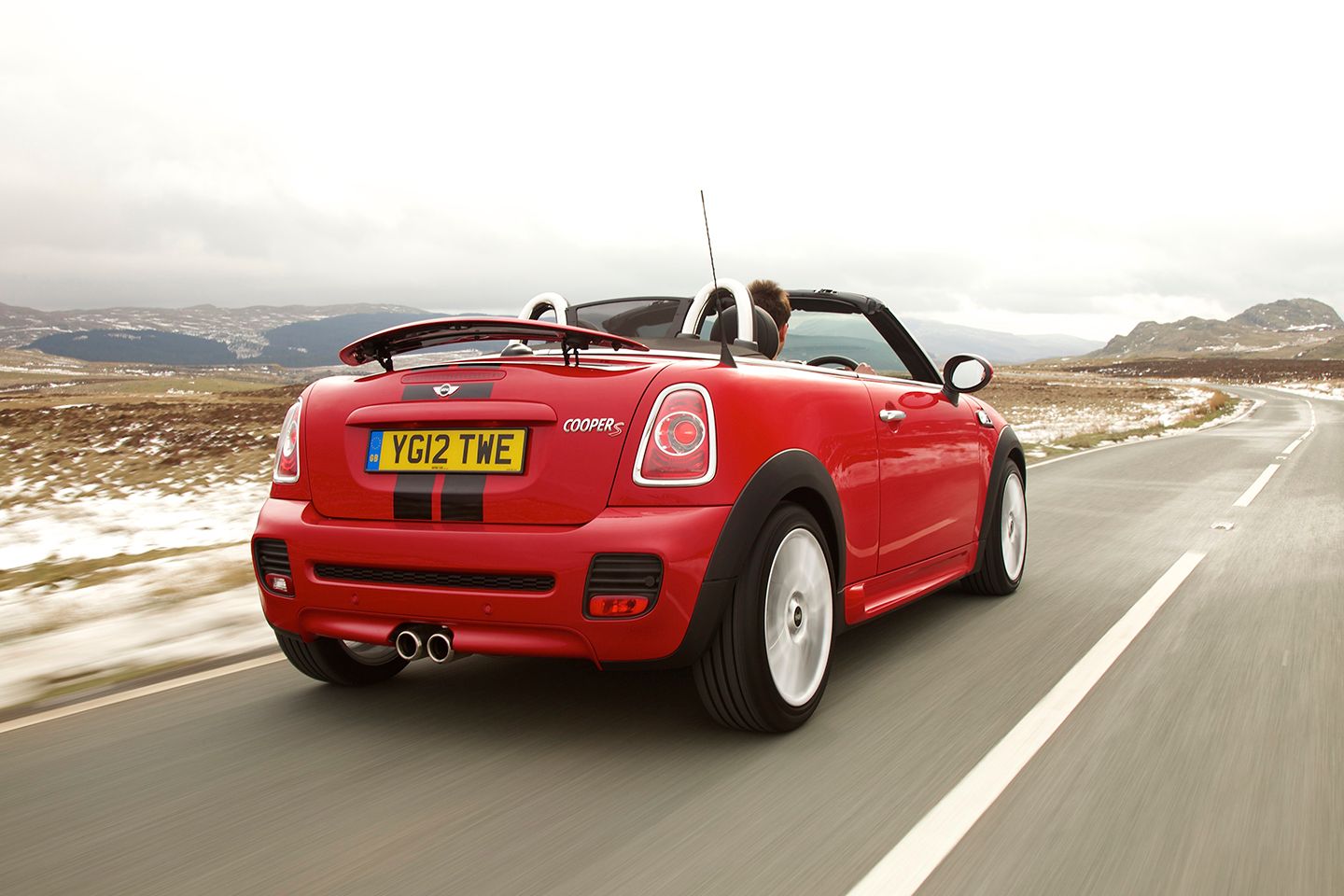
CHASSIS
The Coupe/Roadster suspension design was the usual multilink rear, MacPherson strut front. The S model had firmer damper settings and uprated anti-roll bars front and rear, while the JCW beefed up the dampers and ARBs still more and dropped the ride height by 10mm. By common consent the S setup was the sweet spot.
Boosting the rigidity of the Mini’s body for the Coupe resulted in a slight forward shift in the Coupe’s front to rear weight balance. Mini claimed that the extra load on the front axle improved traction. Driver feel was sweetened by the car’s reduced height and lower centre of gravity. The electric power steering had speed-dependent assistance, all specs coming with a Sport button on the centre console to add weight to the steering and sharpen up the throttle response.
Standard across the range was Dynamic Stability Control with individual wheel braking, cornering brake control, brake assist and hill start assist. The JCW Coupe had electronic diff lock control and dynamic traction control, both of which could be optioned on the lesser models.
The result was excellent handling, especially on smooth racetracks where the very firm JCW settings weren’t exposed. None of the three chassis specs was particularly happy negotiating poor road surfaces, especially if runflat tyres were fitted, but with the right mental attitude the jiggliness was something you could have fun with. Judging by the high number of Cat S and Cat N cars on the used market it would appear that quite a few owners have tried that and failed. You could improve the ride quality a bit by fitting 205/45 Continental Contisport3 tyres.
Vented brake discs were 280mm in diameter on the base model, 294mm on the S and 316mm on the JCW. A full set of brake pads and discs for the front end of a Cooper, plus the sensor, will cost you £280, or £240 for the rear. For the S the same jobs will be £320 and £260. Replacing the brake fluid every two years will be £80.
BODYWORK
The regular Mini was a tough little car, scoring maximum points in crash resistance tests. The Coupe, which was based on the Convertible, had an aluminium roof structure. Its A-pillars and front screen sported an additional 13 degrees of rake over the regular Mini, and the whole car was 29mm lower.
The entire back end of the car from the roofline to the rear bumper was a big (and quite heavy) tailgate incorporating not only an integrated roof spoiler but a second, pop-up, boot-top spoiler that deployed automatically at 50mph and dropped back down at 37mph and that could also be operated via a button in the overhead control panel. A first in Mini history, the spoiler was described by Mini as ‘active’, but after a while some owners found it to be inactive.
The roof on the Roadster was electrically operated, deploying up or down in 18 seconds at speeds of up to 20mph, but it was made of only one layer of material rather than the multi layers of the more refined Convertible. A wind deflector wasn’t standard but it improved the drive so it’s a useful thing to see on a used Roadster.

INTERIOR
Just as you didn’t buy a Mini Coupe or Roadster to achieve a low profile, you didn’t buy one if you had a family as there was nowhere to put them. However, if you and your significant other liked the idea of luxurious packing for holidays or if you needed to move stuff around, even quite substantial stuff, the absence of rear seats in the Coupe turned it into a relatively practical offering. Not just compared to the ordinary Mini hatch, which only had half as much cargo space as the Coupe, but also compared to the estate-y Clubman which was 20 litres light on the Coupe’s carrying capacity. The Coupe’s 280-litre hold could accommodate two golf bags or even skis via the rear bulkhead hatch. On the downside the parcel shelf covering the boot space could be a bit rattly and the keyfob actuation of the rear lid didn’t always work for every owner.
Now, trim. Hmm. This is a sticky subject. You’d think that the toggle switches, dinnerplate-sized central speedo and analogue tachometer directly in front of you might be enough character for most owners, but as usual with Minis there were customisation options galore. Irrespective of spec, all Coupes and Roadsters started life with a digital radio, park distance control and a leather-wrapped steering wheel. The S added cruise control and sports seats to that.
After that it gets confusing. Very few people on the planet understand the full ramifications of Mini’s Salt, Pepper, Chili and JCW packs, which cars you could have them on, or how you could mix and match between them. Fortunately, in 2018 Mini got rid of the first three categories. Unfortunately they replaced them with three more that nobody understood, namely Classic, Sport and Exclusive.
In regards to the Coupe, which came along part of the way through this mess, it would appear that the basic spec was Pepper. Chili gave you sports seats and a multifunction steering wheel, and there was the option of adding Media, Vision or Sport Packs on top of that.
The buttons for the radio are known to fail and head units have been replaced under warranty. The seats were comfy and recesses in the headlining were supposed to give passengers extra headroom. Cynics might wonder how much headroom was being wasted by the rest of the headlining being non-recessed, but it was a conversation point at least.
PH VERDICT
Looking at the Mini Coupe, few of us would think ‘ah yes, that’s the practical car I need’. Most would think ‘ah yes, that’s the mad car I don’t need’. The weird truth however was that the Coupe was actually more practical than most other Mini models as long as you knew you would never need to take more than one passenger with you. The sacrifice of rear seats that were hardly useable in the ordinary Mini anyway made perfect sense when you found out how much cargo space it liberated. You still had the madcap appearance but you also had the ability to take you, your mate and both of your golf stick collections to the course, or to do sensible things like shopping for even quite large items.
At launch, Mini expected the Coupe (and by extension the Roadster) to have class-leading residual values. We’re not sure just how many other cars fall into this somewhat niche two-seater notchback class, so that’s a hard one to quantify 13 years on. All we know is that used Coupe prices in the autumn of 2024 seem remarkably low. We’ve seen basic Coopers at just £1,500, and the £4,500 starting price for a mid-six second 0-62mph car like the JCW has surely got to be worthy of further investigation if you can put up with the tooth-chattering ride.
These low prices are obviously being conditioned by the market’s suspicion of earlier Minis. The thing is, by the time the Coupe was launched in 2011, BMW had dragged the Mini up by its bootstraps in terms of quality and reliability, so the poor reputation of the earlier cars’ engines is pretty much irrelevant here. We could only find one recall affecting the Coupe and Roadster, which was the one for the auxiliary water pump electronics that we mentioned earlier, and that was a generic retrieval that affected quite a few BMWs as well as all Minis.
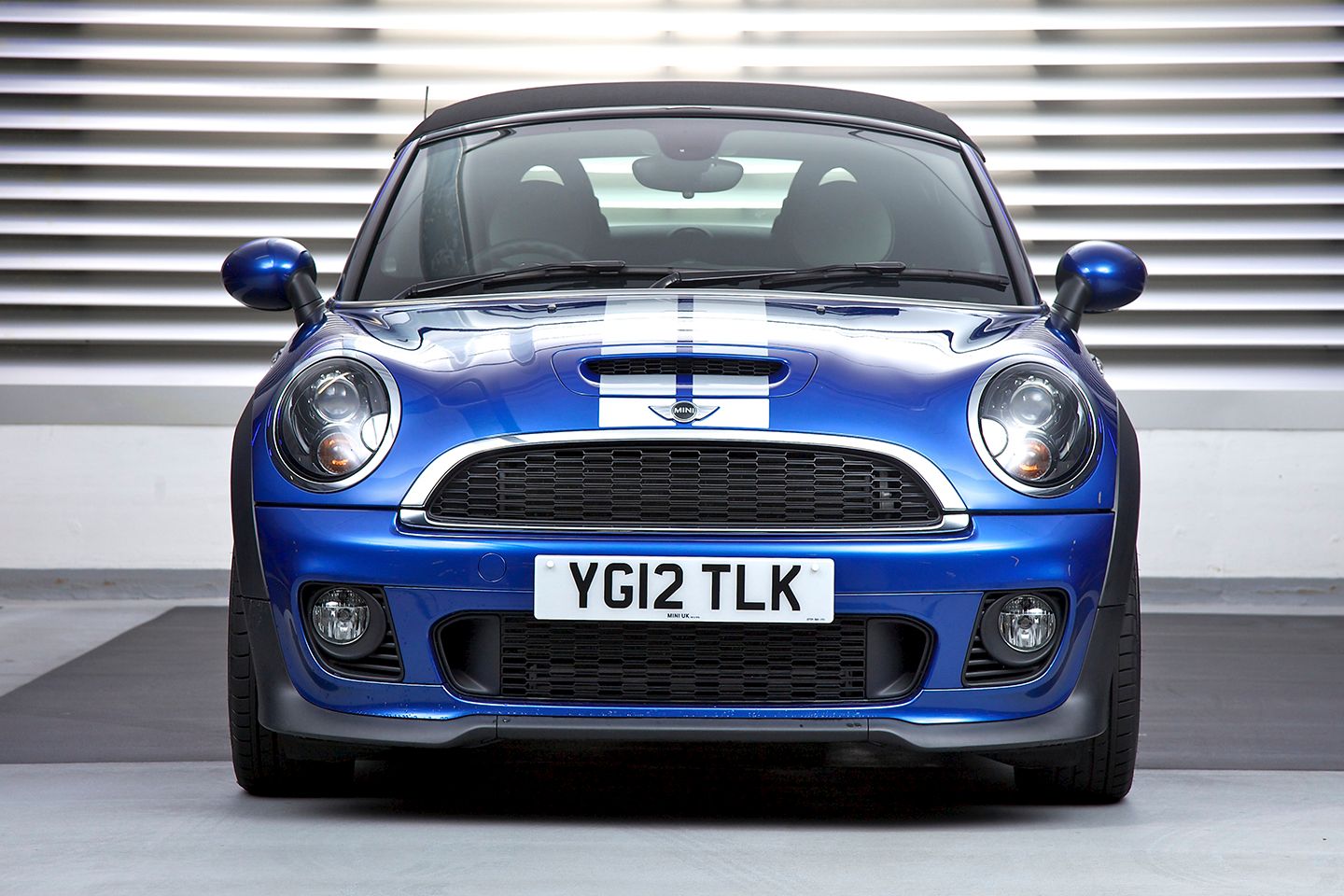
There will be some rattles here and there but the build quality generally was satisfyingly high, the cars drove very well, and in the global scheme of things not many were made in its four-year production span (or three for the Roadster) so it could well be that both cars will accumulate some rarity value over time.
As things stand, the used buyer looking for a Coupe or Roadster will find a happy disconnect between the prices being asked and the ownership experience they can expect to receive. We’d nominate the £3k and up S as the best mix of performance and liveability, although even with that model you’ll need to be prepared for a different level of ride comfort if you’re coming into Minis for the first time.
The most affordable S on PH Classifieds at the time of writing was this 2013 Coupe with 101,000 miles at £3,995. For another £750 you could have this 80,000-miler. Or for £200 on top of that this 2015 car with 58,000 miles. For the LOLs here’s a 2013 JCW Roadster with 46,000 miles at £7,000. At the economy end of the scale just £2,895 will get you this base 120hp 2013 Roadster with 69,000 miles and a full service history.
See every Mini Coupe and Roadster for sale
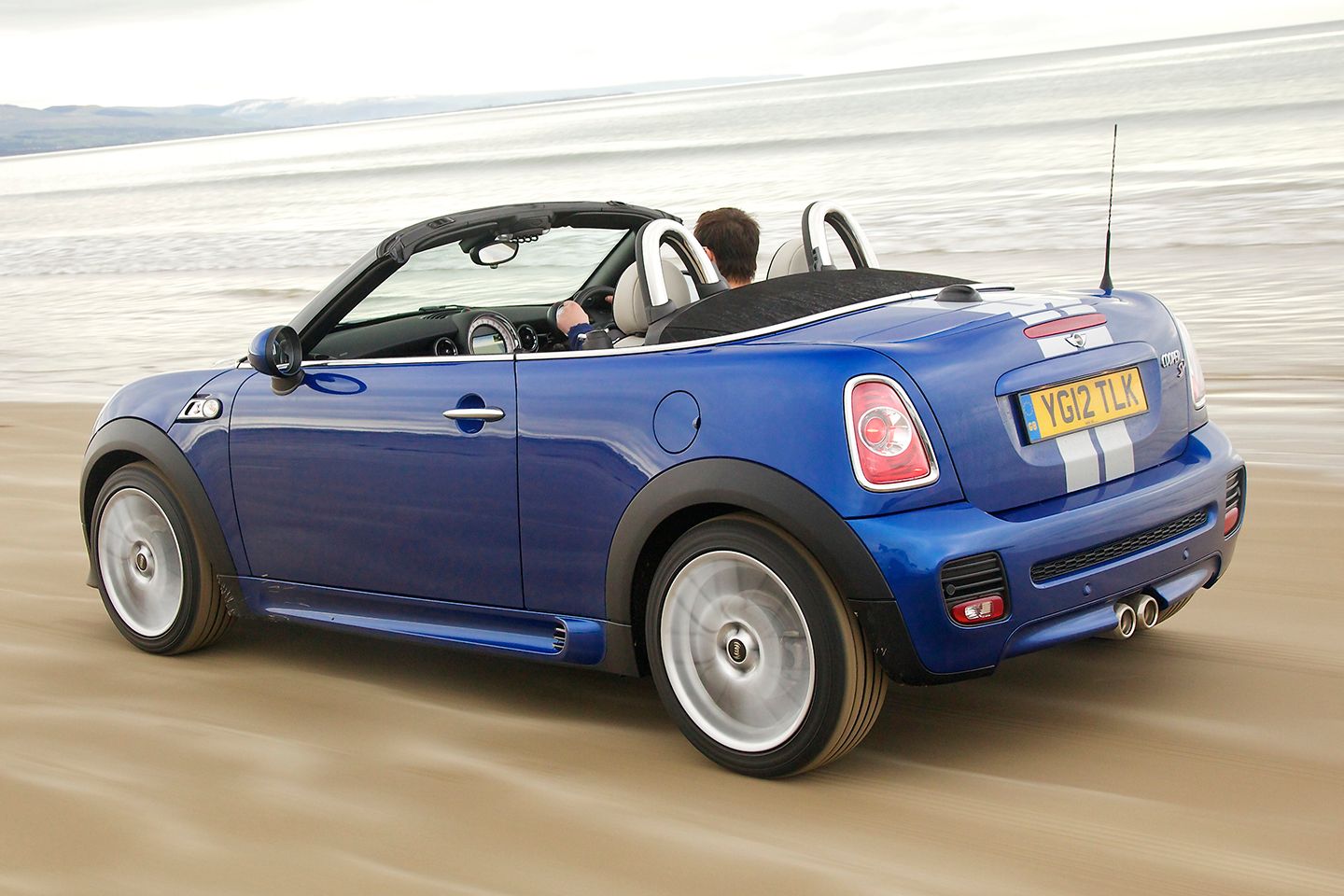


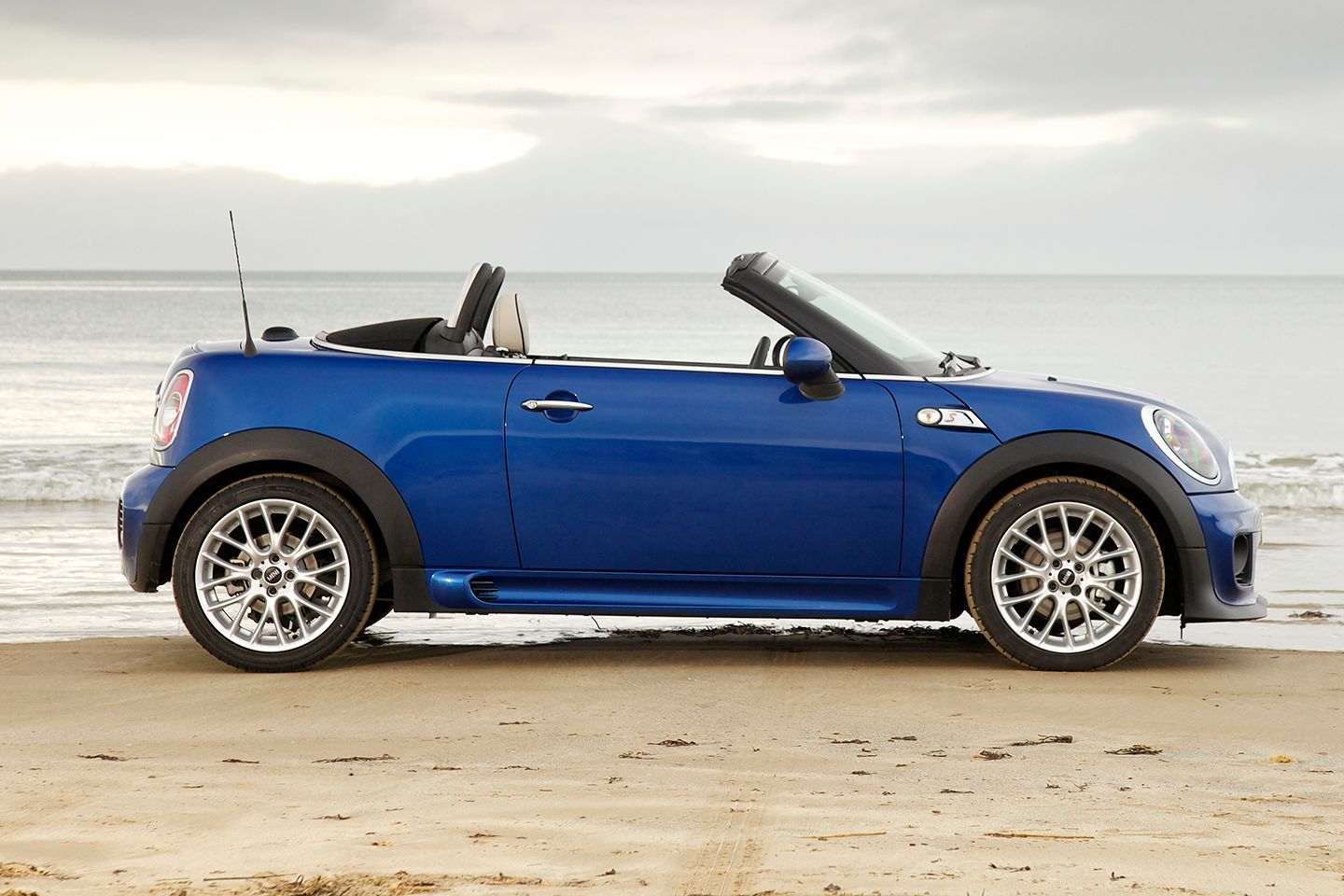
Clearly it’s not casual that this guide comes up so close to Halloween.
Engine worries very much apply.
That engine is absolutely terrible, and will likely need a rebuild or replacement if there is any sign of smoke from the exhaust, particularly after idling.
There is no engine oil level indicator, and the dipstick is unreadable so they frequently get run low on oil.
And as for the Cooper S, the engine let go on PH Deputy Ed Matt Bird’s! https://www.pistonheads.com/news/ph-fleet/mini-coo...
Engine worries very much apply.
That engine is absolutely terrible, and will likely need a rebuild or replacement if there is any sign of smoke from the exhaust, particularly after idling.
There is no engine oil level indicator, and the dipstick is unreadable so they frequently get run low on oil.
And as for the Cooper S, the engine let go on PH Deputy Ed Matt Bird’s! https://www.pistonheads.com/news/ph-fleet/mini-coo...
The thermostat is encased within a large plastic housing so the whole unit has to be bought as one, which you will need to do at least a couple of times because they are notorious for splits and leaking, and because there is no temperature guage they often overheat spelling disaster
for the engine.
R50 was a far more reliable car.
Beauty is personal thing I don’t seem think this any more ugly than a mr2 or a Mx5, & even carrying 200kg more, with a light tune it’s packing over 200bhp per ton
What’s not like ?
Buy a scanguage plug into obd port and your golden, you can check oil and inlet temps on track, the Jcw n14 hasn’t skipped a beat, just do regular maintenance and oil is still cheap. upgrade the tyres and brakes and you can have lots of fun on a budget
Proper lottery with that engine and the values reflect it. Just look at the cost of anything with the same unit - DS3s, other Minis, RCZ, 208GTi ect. All look fab value as perception seems to be that engine will fail.
The generation of 118i with that engine seems to fly under the radar though, maybe as no one expects it in a red platform?
Anyone have a good prince engine experience to offset heresay of the terrible?
The Coupe looks nothing like a MIni and I suspect that the disconnect between many people's expectations of the name and what's in front of them just further annoys their feeling of comfort when it comes to the styling.
I don't think anyone ever pretended it was pretty but nobody could deny it's stunning. Just not beautiful.
It's certainly the best drivers Mini and I agree, the S is probably the sweet spot if you want a truly special MIni, the likes of which we'll probably never see again.
ones that have had diligent and clued up owners who change the oil regularly and attend to the first sign
of chain tensioner springs becoming weak (death rattle) have often had many thousands of miles of trouble
free motoring.
Whether it's in a Mini, or a Pug / Citroen you can rest assured if it's run low on oil or allowed to rattle for too long
it will end in disaster. The rocker covers are known for warping and leaking oil down the back of the engine
as well.
If you look on the salvage sites you will often see them listed as 'non runner' 'mechanical problem' 'engine won't start,
reason unknown' or some other description, and some at fairly low mileage, saying that I've seen a lot of THPs
with over 160k on them, whether it's on it's original engine though is anyones guess.
Also I seem to see a lot of them with really worn and scored looking cam lobes, I assume because they burn/leak oil and get run low on it all the time. It's the only car I've ever had ping an EML and run rough because of low oil levels too, it upsets the VVC system.
It's a shame because when they work they're fantastic, leagues more sophisticated than other little hatchbacks as you'd expect from the much higher technical sophistication of the engine and chassis compared to a Fiesta or similar. They're more like a shrunk 3 series than anything else.
Have to say though, the F56 models are a huge step forward. Avoid stupid giant wheels and they have incredible refinement for a small car.
The thermostat is encased within a large plastic housing so the whole unit has to be bought as one, which you will need to do at least a couple of times because they are notorious for splits and leaking, and because there is no temperature guage they often overheat spelling disaster
for the engine.
R50 was a far more reliable car.
They're clearly designed for the benefit of the first owners and with scant regard to long term ownership, like every other vaguely modern BMW.
Gassing Station | General Gassing | Top of Page | What's New | My Stuff

